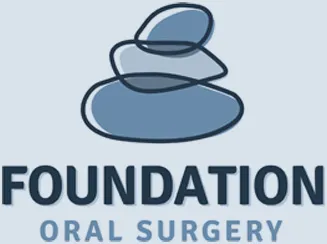Distraction Osteogenesis
Distraction osteogenesis (DO) is a relatively new method of treatment for selected deformities and defects of the oral and facial skeleton. It was first used in 1903. In the 1950s, the Russian orthopedic surgeon, Dr. Gabriel Ilizarov slowly perfected the surgical and postoperative management of distraction osteogenesis treatment to correct deformities and repair defects of the arms and legs. His work went mostly unnoticed until he presented to the Western Medical Society in the mid-1960s.
Distraction osteogenesis was initially used to treat defects of the oral and facial region in 1990. Since then, the surgical and technological advances made in the field of distraction osteogenesis have provided the oral and maxillofacial surgeons with a safe and predictable method to treat selected deformities of the oral and facial skeleton.
Distraction osteogenesis is only recommended in unique circumstances, when conventional jaw surgery or bone grafting is not possible. During your consultation, we will discuss your options to see if distraction osteogenesis is an option for your particular situation.
Frequently Asked Questions About Distraction Osteogenesis
What does the term distraction osteogenesis mean? Simply stated, distraction osteogenesis means the slow movement apart (distraction) of two bony segments in a manner such that new bone is allowed to fill in the gap created by the separating bony segments.
What are the benefits of distraction osteogenesis vs. traditional surgery for a similar condition? Distraction osteogenesis surgical procedures grow new bone and soft tissue, rather than rearranging existing tissue from somewhere else in the body. Distraction osteogenesis eliminates the need for bone grafts, and therefore, another surgical site. Lastly, distraction osteogenesis is associated with greater stability when used in major cases where significant movement of bony segments are involved.
What are the disadvantages of distraction osteogenesis? Distraction osteogenesis typically requires two surgeries instead of one, as the distraction device typically needs to be removed at a later time once the bone has healed.
Does distraction osteogenesis leave scars on the face? No. The entire surgery is performed within the mouth and the distraction devices used by Oral Surgeon Dr. Robertson remain inside the mouth. There are no facial surgical incisions are made so no facial scars result.
Are there any age limitations for patients who can receive osteogenesis? No. distraction osteogenesis works well on patients of all ages. In general, the younger the patient the shorter the distraction time and the faster the consolidation phase. Adults require slightly longer period of distraction and consolidation because the bone regenerative capabilities are slightly slower than those of adolescence or infants.
 Foundation Oral Surgery Phone Number 403-263-5193 or complete our Contact Form to request an appointment.
Foundation Oral Surgery Phone Number 403-263-5193 or complete our Contact Form to request an appointment.
